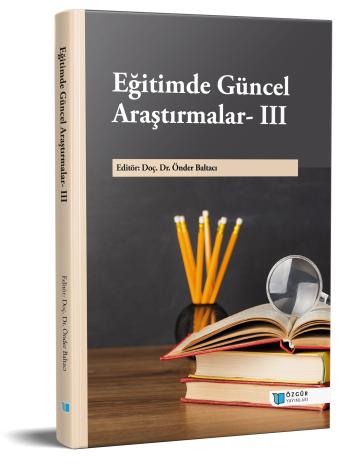
Turkey’s Achievement Profile in the Context of Equal Opportunities in Education: Evaluation of TIMSS (2019) and PISA (2018) Results and Some Current Policies
Şu kitabın bölümü:
Baltacı,
Ö.
(ed.)
2023.
Eğitimde Güncel Araştırmalar- III.
Özet
In adapting to the changing century, individuals must struggle with many unknown situations. It is important for individuals to have many skills in adapting to new developments and overcoming challenges. Education undoubtedly plays a big role in acquiring and maintaining these skills. Getting a better education for individuals means a better future. This situation represents a better economic welfare situation for a country. Considering international assessment indicators is crucial for providing a better education. The Program for International Student Assessment (PISA) and the International Mathematics and Science Trends Survey (TIMSS) are among the most well-known of these exams. Even though our country has a developing profile in these exams, it seems that there is still work to be done. Among OECD countries, performance gaps between schools are high in Turkey. It is necessary to provide a more qualified education that offers equal opportunities. Therefore, steps need to be taken. In this context, the research reflects Turkey's profile in the context of equal opportunity in education within the framework of PISA (2018) and TIMSS (2019) results. In addition, Turkey's recent education policies in the context of equal opportunity in education are discussed. Thus, it is aimed to shed light on the structures by reflecting the latest situation regarding equal opportunities in education and to draw attention to what needs to be done. Qualitative research method was used in the research. Document analysis technique, one of the qualitative research methods, was used in the research. As a result of the research, it is seen that Turkey has a student profile that exhibits a higher level of low performance and a lower level of high performance in basic skill levels compared to OECD countries, in line with PISA (2018) and TIMSS (2019) data. On the other hand, it is seen that there is an improvement in intermediate level skills, but there is something to be done about the performance gaps. Furthermore, in the context of relevant data, it is seen that the socio-economic disadvantage situation continues in schools within the country regarding educational equity. Variations are also observed in academic skill averages and academic support provided between schools. On the other hand, it is seen that developments have been achieved with many applications and projects. When we look at the relevant applications, it is seen that the continuity of what has been done must be ensured and additional applications are needed.

